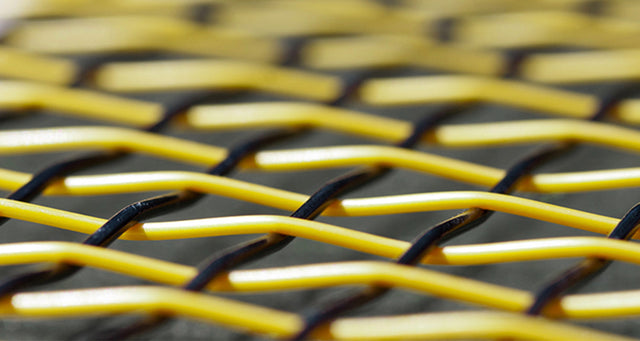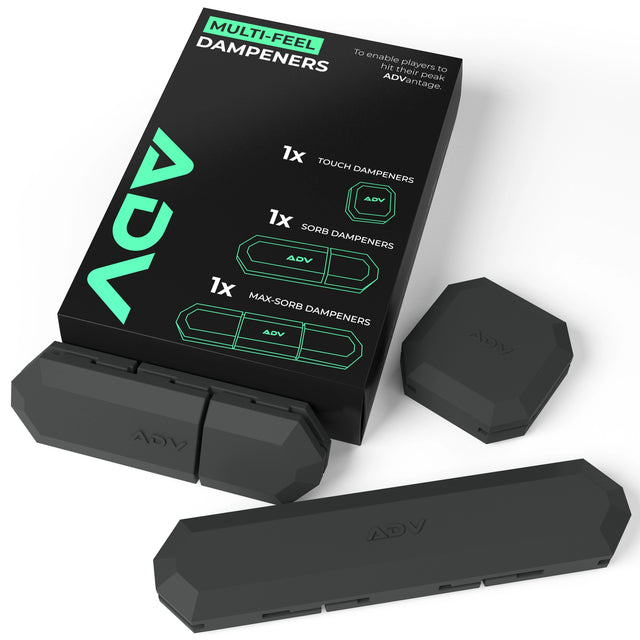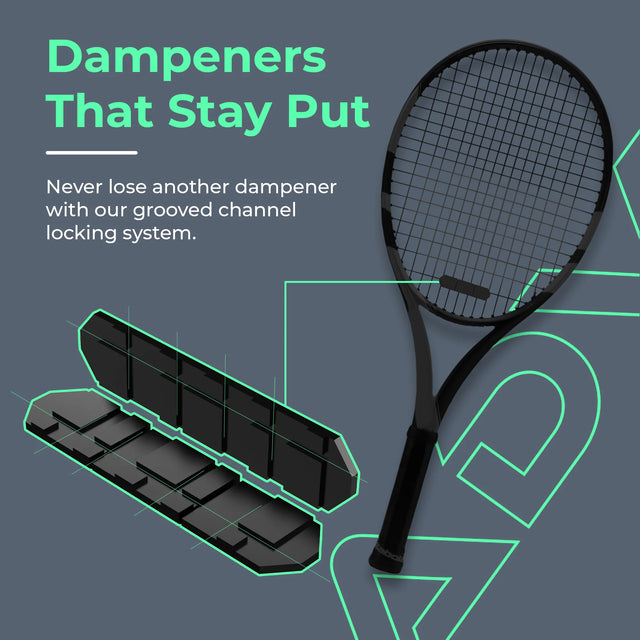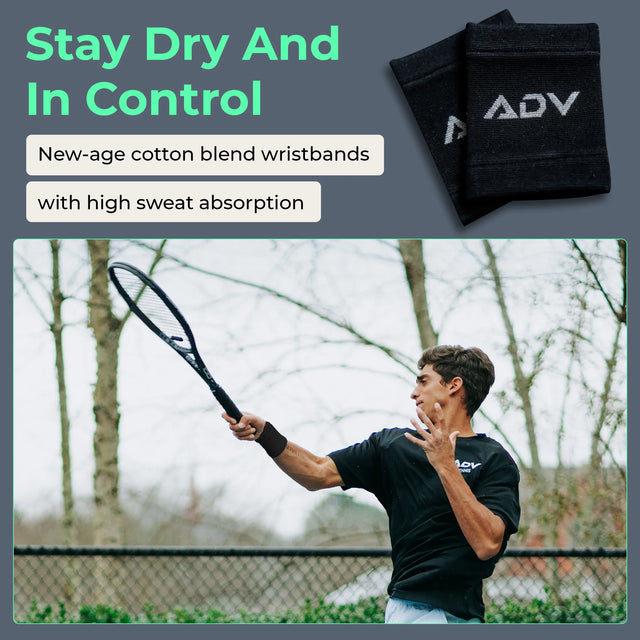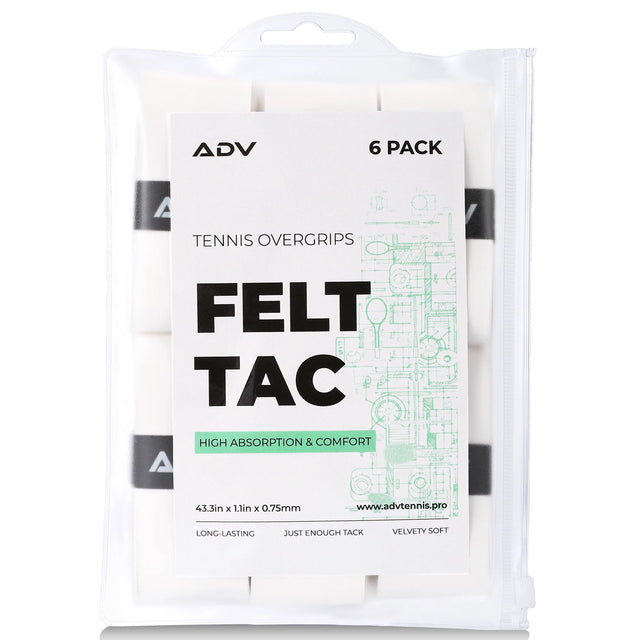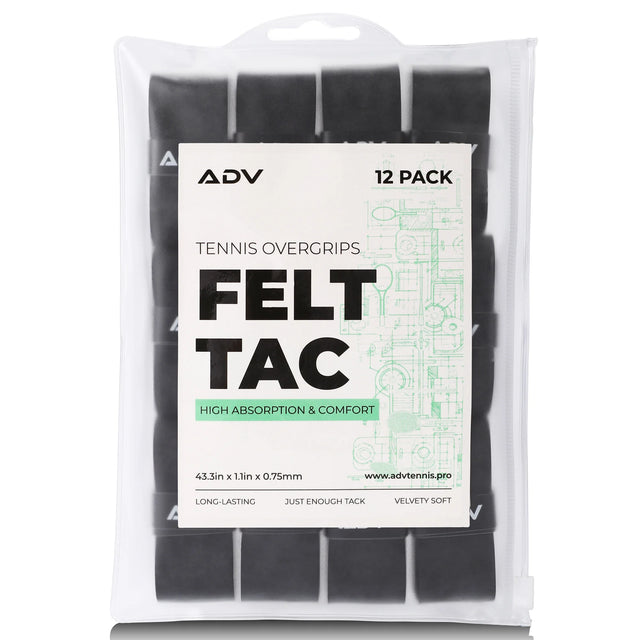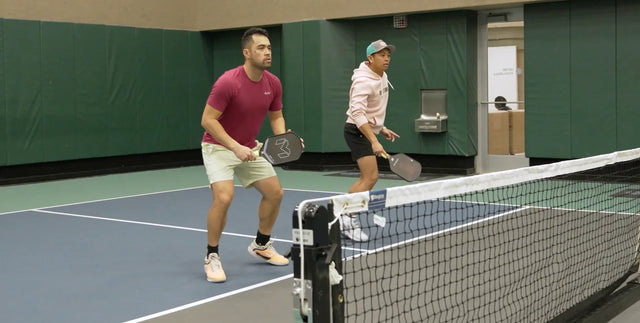Tennis String Types and What You Should Know
Purchasing tennis equipment can seem like a fairly straight-forward affair. Basically, all you need to begin playing the game is a tennis racket and ball. However, there is more to it than that and as your game develops you will need to tailor your equipment. One of the key aspects to consider is the strings of the racket and there are different tennis string types available depending on your style and level of play.
4 TYPES OF STRING
In terms of tennis string construction, there are four different material compositions. The material you decide to use should be based on your level of play, type of shots you employ and also your budget. Let's take a closer look at each of the four tennis string types and you can then decide which is most suitable for your racket.
HERE ARE 3 QUICK OVERGRIP TIPS & TRICKS:
If your grip size is too small, one trick is to add an overgrip (or two) to increase the grip size without having to get a new racket.
Often times (not all the time), a casual player will benefit from an overgrip that provides tackiness whereas a competitive player will more like prefer sweat moisture absorption.
An overgrip is a great way to customize your racket to meet your own style. They often come in a wide variety of colors.
SYNTHETIC GUT STRINGS

If you are new to the sport or you simply have no idea where to begin the best option is to use synthetic gut tennis strings. This is a nylon based string and it is often surrounded by additional layers to improve performance. The greater the number of additional layers wrapped around the string the more durable it becomes. The cushioning effect of the string also improves as more layers are added.
Synthetic gut tennis strings offer the best value and provide a solid all round performance. Many beginner tennis players will choose this tennis string type and although it does not excel in any particular category, it is a great way to start. However, some professional players have been known to use synthetic gut tennis strings, including multiple Grand Slam winner Jim Courier.
NATURAL GUT STRINGS

When discussing or choosing tennis string types, it is important not to confuse synthetic gut with natural gut. They are completely different in every way beginning with the material used in their construction. Natural gut tennis strings are made from the serous membrane of cow intestines. So, when we say ‘natural gut’ we really mean natural gut!
It is possible to trace the history of natural gut back almost 200 years yet it remains one of the most popular tennis string types available today. Using the individual strands of fibers from the membrane of cow intestines, natural gut tennis strings are extremely elastic. That means they offer a tremendous combination of feel, power, and comfort. That's why you will find many of the world’s leading players choosing to use natural gut tennis strings.
However, they do not come cheap, plus the durability is questionable meaning you will have to replace natural gut strings sooner than synthetic gut strings.
MULTIFILAMENT STRINGS

For those players who like the sound of natural gut strings and the benefits they provide but would like to use something a little cheaper and more durable, multifilament strings could be the answer. It may be the case you simply do not like the fact natural gut strings are made from cow intestines, which is understandable! Therefore, multifilament is the best alternative.
Multifilament tennis strings are created using individual nylon string filaments bonded together by a polyurethane agent. The construction allows these strings to absorb the impact of the ball on the tennis racket yet provide plenty of power when playing shots. If you enjoy hitting the ball deep in the court, multifilament strings are ideal although they are not so good for those who like to play a variety of shots. You can rely on the tension of multifilament tennis strings to remain constant for a longer period of time than the two tennis string type highlighted above. However, if you like to hit the ball hard, you may find durability becomes an issue.
POLYESTER STRINGS

Now we come to the last of our tennis string types and polyester strings provide a great comparison to multifilament strings. Polyester strings have grown in popularity over the past 20 years and you only have to look at the style of play employed by Rafael Nadal to understand the benefits they provide.
Now, we are not saying you are going to start playing like Nadal by using polyester strings! However, if you are the type of player who likes to play with spin and control, you will enjoy using this type of tennis string. Polyester strings are also noted for their durability but generating power on shots does not come easy and they are less forgiving on the arm.
Stringing it all together...
You must always consider your style of play when deciding which of the tennis string types to use. Think about the shots you enjoy playing on the court and how each of the different tennis string types highlighted above are suited to the shots you like to play.
🎾 Written by Daniel Jones, staff writer

